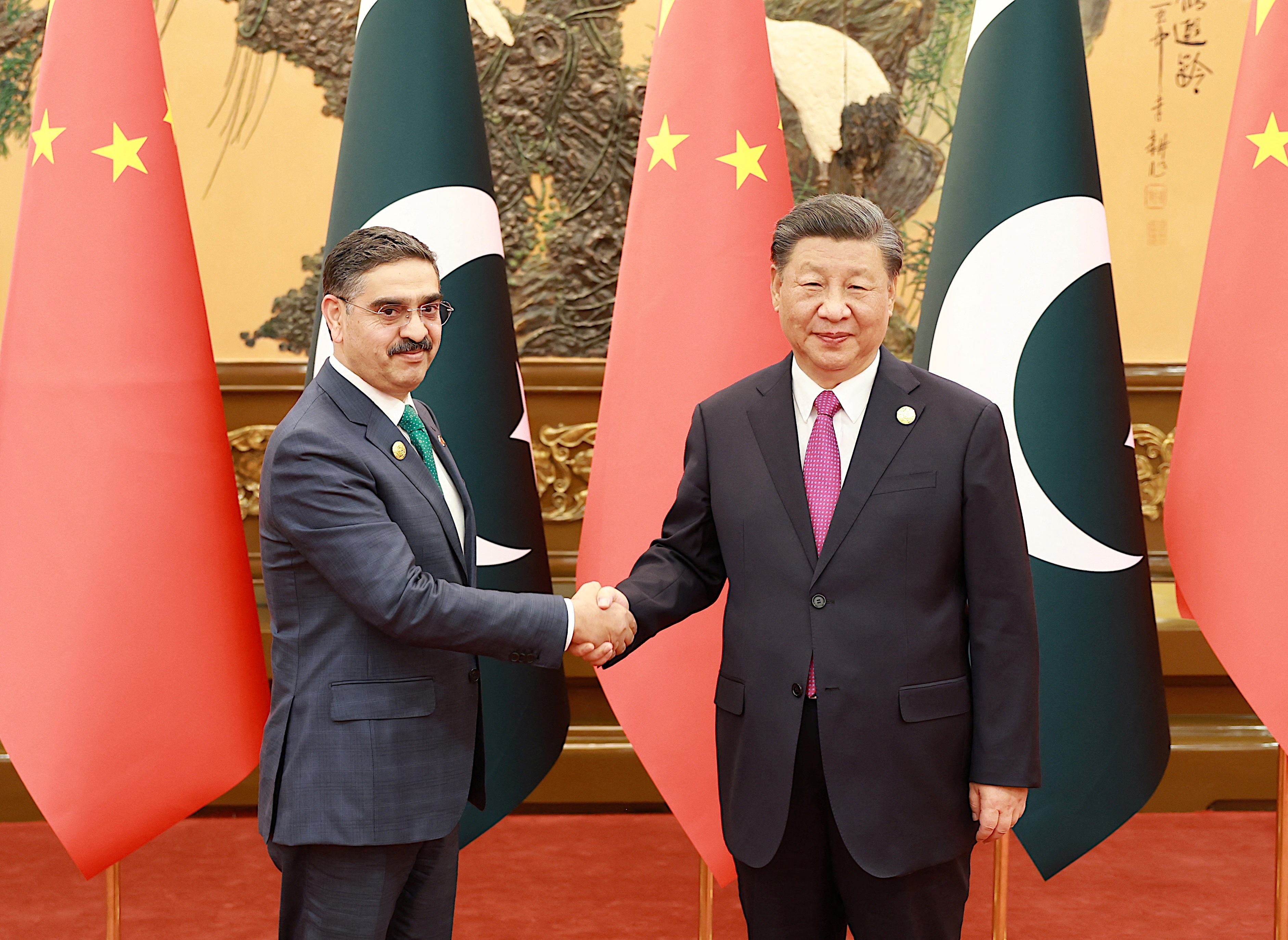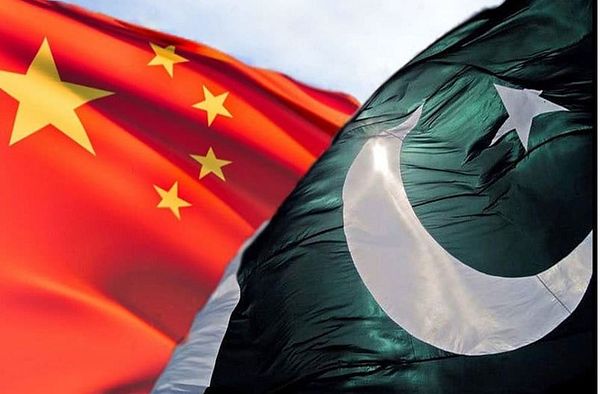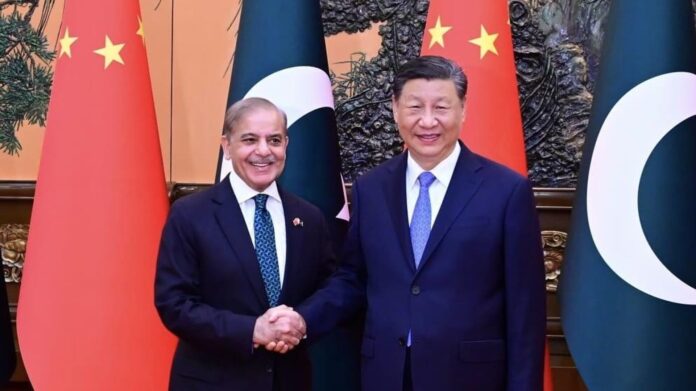Pakistan-China $45 Billion Security Pact: A Boon for CPEC or a Threat to Pakistan’s Sovereignty?
The announcement of a $45 billion joint security agreement between Pakistan and China, coming just days before the Shanghai Cooperation Organisation (SCO) meeting in Islamabad, has generated significant attention in the region, particularly in India. The agreement, aimed at protecting Chinese nationals and investments in Pakistan, has implications far beyond security, highlighting issues of sovereignty, economic dependency, and regional instability. Since 2022, China has been pushing for such an arrangement, primarily to safeguard its personnel working on the China-Pakistan Economic Corridor (CPEC), a crucial component of Beijing‘s Belt and Road Initiative (BRI). This deal, however, raises serious concerns about Pakistan’s internal dynamics, its sovereignty, and its ability to manage its own economic and security challenges.

The joint security framework mandates that Pakistani personnel will handle security in the outer areas of CPEC projects, while Chinese personnel will oversee security in inner zones. This layered approach reflects the growing anxiety in Beijing over the safety of its workers, especially in the wake of increased violence against Chinese nationals in Pakistan. The deal, while providing a security cushion for Chinese investments, has sparked debates over Pakistan’s sovereignty, with critics questioning whether the country is ceding too much control to a foreign power.
Pakistan is currently grappling with multiple crises, including a deep economic recession, political instability, and security threats. The country’s economic woes have worsened, with inflation, soaring fuel prices, and excessive external debt further burdening the nation. Pakistan’s internet infrastructure, for example, has faced disruptions due to an upgrade to its Web Management System, often referred to as an “internet firewall,” implemented by China.
This has led to bandwidth shortages and slowed down internet access in several cities, further exacerbating the economic hardship. Moreover, Pakistan has been heavily reliant on International Monetary Fund (IMF) loans, with the latest $7 billion bailout marking its 24th loan since 1958, underscoring its financial fragility. Despite these challenges, Pakistan has directed a significant portion of the funds from the China security deal—Rs 35.4 billion—to the military, with an additional Rs 9.5 billion allocated for naval security.

This is not the first instance of significant financial allocation to Pakistan’s defense forces. Earlier in June, the defense budget saw an allocation of Rs 2.127 trillion, followed by an additional Rs 60 billion for **Operation Azm-e-Istehkam**, a national-level counterterrorism program. This increased military spending comes at a time when the country is in dire need of economic reform and domestic development, leading many to question the government’s priorities. China, as part of the security agreement, has proposed advanced counterterrorism measures, including vehicle-mounted security equipment and armoured vehicles, reflecting its commitment to protecting its investments amidst rising violence.
The rising security concerns, particularly regarding Chinese nationals, are not unfounded. Recent attacks on Chinese workers, especially in volatile regions like Balochistan, have raised alarms. For instance, in Karachi, two Chinese workers were killed and another injured when their vehicle was attacked by the Balochistan Liberation Army’s (BLA) Majeed Brigade. This incident is one of many that have targeted Chinese nationals and CPEC projects, highlighting the risks associated with foreign investment in Pakistan’s unstable regions. The BLA and other separatist groups, such as the Balochistan Liberation Front and Tehrik-i-Taliban Pakistan, have been increasingly active in their efforts to disrupt what they view as foreign exploitation of their land and resources.

The BLA, in particular, has ramped up its operations against Chinese interests, seeing CPEC projects as symbols of economic exploitation that disproportionately benefit foreign interests over local welfare. The group recently attempted to breach the Gwadar Port Authority complex, sending a strong message against China’s growing presence in the region. The unrest in Balochistan is rooted in long-standing grievances over economic inequality, political marginalization, and resource exploitation. Balochistan, a resource-rich province bordering Afghanistan and Iran, is home to significant deposits of gas, oil, copper, and gold. However, locals have long felt sidelined, as development efforts are perceived to be disproportionately focused on Punjab, leaving Balochistan impoverished and underdeveloped.
The growing Chinese presence and Pakistan’s reliance on Chinese funds to support key infrastructure projects, like CPEC, have deepened these grievances. Local communities feel that the region’s natural resources are being exploited for the benefit of foreign investors, with little benefit trickling down to the people of Balochistan. In response, security has been heightened around CPEC projects, but this has often led to increased restrictions on local populations, further fueling resentment.
Beijing’s concerns over the safety of its workers in Pakistan are well-documented. Reports suggest that China has been seeking to deploy its own security personnel to protect the 1,200 Chinese workers stationed in Pakistan, though Islamabad has not agreed to this. In 2016, Pakistan established multiple army and naval units to protect CPEC projects, but Beijing remains skeptical about the effectiveness of these forces in curbing the rising violence.
The $50 billion CPEC initiative, a critical part of China’s Belt and Road Initiative, aims to create a 3,000-kilometer infrastructure network connecting Gwadar and Karachi’s ports to China’s Xinjiang Uygur Autonomous Region by land. While this project has the potential to boost Pakistan’s economy, critics argue that it may also place the country in a vulnerable position, increasing its reliance on Chinese loans and deepening concerns about a possible debt trap. Observers claim that prioritizing Chinese interests over broader economic reforms risks exacerbating Pakistan’s internal tensions and undermining its sovereignty.
The upcoming SCO meeting in Islamabad on October 15-16, which will bring together Indian External Affairs Minister S. Jaishankar, Chinese Premier Li Qiang, and other regional leaders, is expected to focus on security and economic cooperation. The spotlight will likely be on Pakistan’s evolving relationship with China, particularly in light of the security agreement, and how this may affect its regional standing and internal stability.
In conclusion, while the new security arrangement between Pakistan and China may offer protection for Chinese investments and workers, it raises critical questions about Pakistan’s long-term sovereignty and its ability to balance foreign interests with domestic priorities. As Pakistan continues to grapple with political instability, economic challenges, and rising violence, it must navigate the delicate task of ensuring that projects like CPEC benefit all stakeholders, including local populations, to avoid deepening existing grievances and further destabilizing the region.

